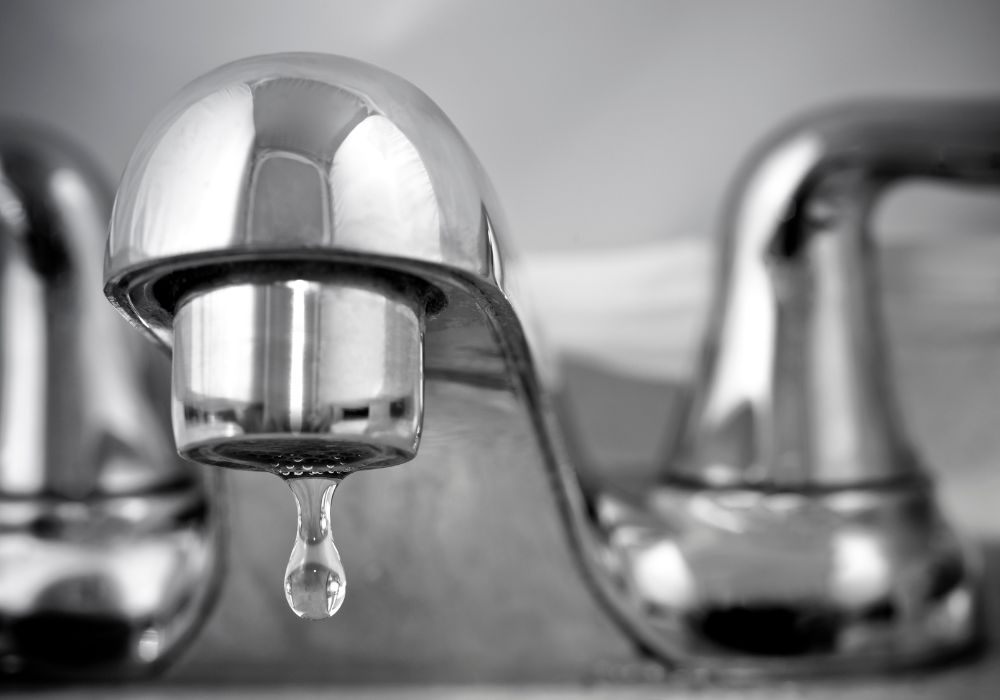You can tighten a loose Moen Kitchen Faucet Base by locating the mounting screws underneath the sink. Use a screwdriver to tighten these screws until the base is secure and no longer wobbles. If the mounting screws are already tight, the problem may be due to a worn-out mounting gasket or O-ring needing replacement.
Remove the faucet, replace the gasket or O-ring, and reinstall the faucet, ensuring to tighten the mounting screws are secure.
Why Is My Moen Kitchen Faucet Loose?
A loose faucet base can be a frustrating problem that can cause water leakage and other issues in your kitchen. Before we dive into the steps, let’s first understand why the Moen kitchen faucet base becomes loose.
Over time, the nuts and bolts that hold the faucet base in place can become loose due to repeated use. Factors such as water pressure, temperature changes, and improper installation can also cause the ground to become loose.
How Do I Know That My Faucet Base Is Loose?
By following these steps, you can quickly determine if your faucet base is loose and take action to tighten it before further damage occurs.
If you experience any of these issues, it is vital to take action to tighten the faucet base and prevent further damage to your plumbing fixtures.
Monitoring your Moen kitchen faucet base for looseness at least once a year is a good idea to avoid potential issues.
- Turn off your water supply to the faucet.
- Place your hand on the faucet and try to move it back and forth. If you notice that the faucet base is wobbling or moving, then it is likely that the base nuts are loose. You can also wiggle the faucet with your hand to check for any movement.
- Inspect the area around the base of the faucet. If you see a gap between the faucet and the sink, this is also an indication that the base is loose and needs to be tightened.
- Turn the faucet on and observe the water flow. If the water flow is reduced or water is leaking from around the base of the tap, this may be another sign that the base is loose.
How To Tighten a Loose Moen Kitchen Faucet Base?
Regarding your kitchen faucet, a loose base can be a frustrating and inconvenient issue to deal with. Not only does it affect the functionality of your faucet, but it can also cause water leaks and potential water damage.
Fortunately, fixing a loose Moen kitchen faucet base is a simple task you can do independently. I will share step-by-step instructions on tightening a loose Moen kitchen faucet base.
Step 1. Turn off the Water Supply
Before you start working on your kitchen faucet, it is essential to turn off the water supply to prevent any accidents or water damage. Locate the shut-off valves under the sink and turn them off by turning the handles clockwise.
Step 2. Remove the Handle
Once you have turned off the water supply, you need to remove the handle of the kitchen faucet. This can be done by locating the set screw on the hold and unscrewing it with a screwdriver. Once the screw is removed, you can lift the handle off the faucet.
Step 3. Tighten the Base Nuts
With the handle removed, you can now access the nuts holding the faucet base. Use a wrench to tighten the nuts by turning them clockwise. Be careful not to overtighten the nuts, as this can cause damage to the faucet.
Step 4: Reassemble the Faucet
Once you have tightened the base nuts, you can reassemble the faucet by placing the handle back onto it and securing it with the set screw. Turn on the water supply and test the spout to ensure it works correctly.
If the mounting screws are tight and the faucet base still wobbles, the issue may be due to a worn-out mounting gasket or O-ring. In this case, you must replace the damaged part to fix the problem.
Remove the faucet, replace the gasket or O-ring, and reinstall the faucet, ensuring to tighten the mounting screws are secure.
You will need a few essential tools to tighten a loose Moen kitchen faucet base. Here are the tools you will need:
- Adjustable wrench
- Basin wrench
- Phillips head screwdriver
- Allen wrench (if your faucet has a set screw)
Having these tools on hand is vital before tightening your faucet base. If you don’t have the necessary tools, you can purchase them at a hardware store or online retailer. The right tools will make tightening your Moen kitchen faucet base much more manageable and efficient.
You don’t need unique materials to tighten a loose Moen kitchen faucet base. However, depending on your faucet type, you may need some basic materials to help with the tightening process. Here are some materials that might be helpful:
- Plumber’s tape – If your faucet connections are loose and causing leaks, adding the plumber’s tape to the threads can help create a tighter seal.
- Silicone caulk – If the area around the base of your faucet is not sealed correctly, it can cause water to leak under the sink. Adding a small silicone caulk around the base can help prevent leaks.
- Cleaning solution – Before tightening the faucet base, it’s a good idea to clean the area around it to remove any dirt or debris that may have accumulated. A mild cleaning solution, such as dish soap and water, should be sufficient for this task.
These materials are unnecessary for tightening a loose Moen kitchen faucet base. Still, they can help ensure a tight seal and prevent future leaks.
How Do I Tighten a Loose Moen Single-Handle Kitchen Faucet?
A Moen single-handle kitchen faucet is designed with a single handle that controls the water flow and temperature.
One of the advantages of a Moen single-handle kitchen faucet is that it offers precise control over water temperature and flow rate, allowing you to adjust the water to your desired level easily.
Moen single-handle kitchen faucets are also known for their durability and reliability, with many models featuring ceramic disc valves that are resistant to wear and tear.
These valves help prevent leaks and drips, saving you money on your water bill and avoiding water damage to your kitchen.
Suppose your Moen single-handle kitchen faucet is loose. In that case, it can cause leaks making it difficult to control water flow, and may eventually cause damage to your sink or countertop.
To tighten a loose Moen single-handle kitchen faucet, follow these steps:
- Turn off the water supply to your faucet.
- Use an Allen wrench or a hex key to remove the handle. The set screw securing the handle is typically located at the base of the handle or underneath a decorative cap.
- Once the handle is removed, use an adjustable wrench to tighten the mounting nut under the faucet.
- Reattach the handle and secure it with the setscrew using the Allen wrench or hex key.
- Turn your water supply back on and test the faucet to ensure that it no longer wobbles or leaks.
If the above steps do not solve the issue, the problem may be due to a worn-out cartridge or valve. In this case, you must replace the damaged part to fix the issue. Refer to your Moen faucet’s user manual or contact a professional plumber for guidance on replacing the cartridge or valve.
How Do I Remove a Moen Kitchen Faucet?
You will need a few tools and basic plumbing knowledge to remove a Moen kitchen faucet. Here are the steps to follow:
- Turn off the water supply: Locate the shut-off valves under the sink and turn them off to stop the water flow.
- Disconnect the supply lines: Use a wrench to loosen the nuts that connect the hot and cold supply lines to the faucet.
- Remove the mounting hardware: Loosen the nuts holding the faucet. You may need a basin wrench or adjustable pliers to reach them.
- Lift the faucet off the sink: Gently lift the faucet off the sink and remove any remaining mounting hardware.
- Clean the sink surface: Use a scrubber or a razor blade to remove any residue or caulking from the sink surface.
- Install the new faucet: Follow the manufacturer’s instructions to install the new faucet, including mounting hardware and supply lines.
- Turn on the water supply: Turn on the water supply and check for leaks. You can tighten loose connections and enjoy your new faucet if everything works correctly.
Remember, if you are uncomfortable with plumbing or need clarification on what you are doing, it is always best to hire a professional plumber to remove and install your kitchen faucet.
How Do I Stop a Moen Kitchen Faucet From Dripping?

If the base nuts are already tight, but the faucet is still loose, the problem may be due to worn-out O-rings or washers. In this case, it is recommended to call a professional plumber to fix the issue.
To stop a Moen kitchen faucet from dripping, turn off your water supply first and close the drain.
- Using an Allen wrench or screwdriver, remove the handle from the faucet. You may need to remove a cap or cover to access the screw. This may differ depending on the model.
- Remove the cartridge using pliers, grip the top and bottom, and pull it straight out. If the cartridge is stuck, use a cartridge puller tool.
- Inspect the cartridge for damage or wear, such as cracks, chips, or corrosion. If the cartridge is damaged, it will need to be replaced.
- Clean any debris or mineral buildup from the cartridge and the faucet body with a soft-bristled brush and vinegar or a commercial cleaner.
- Replace the cartridge and handle in the reverse order that you removed them. Turn the water supply back on and check for leaks.
- Suppose your Moen kitchen faucet continues to drip after following these steps. Replacing the cartridge or the entire faucet may be a time in that case.












